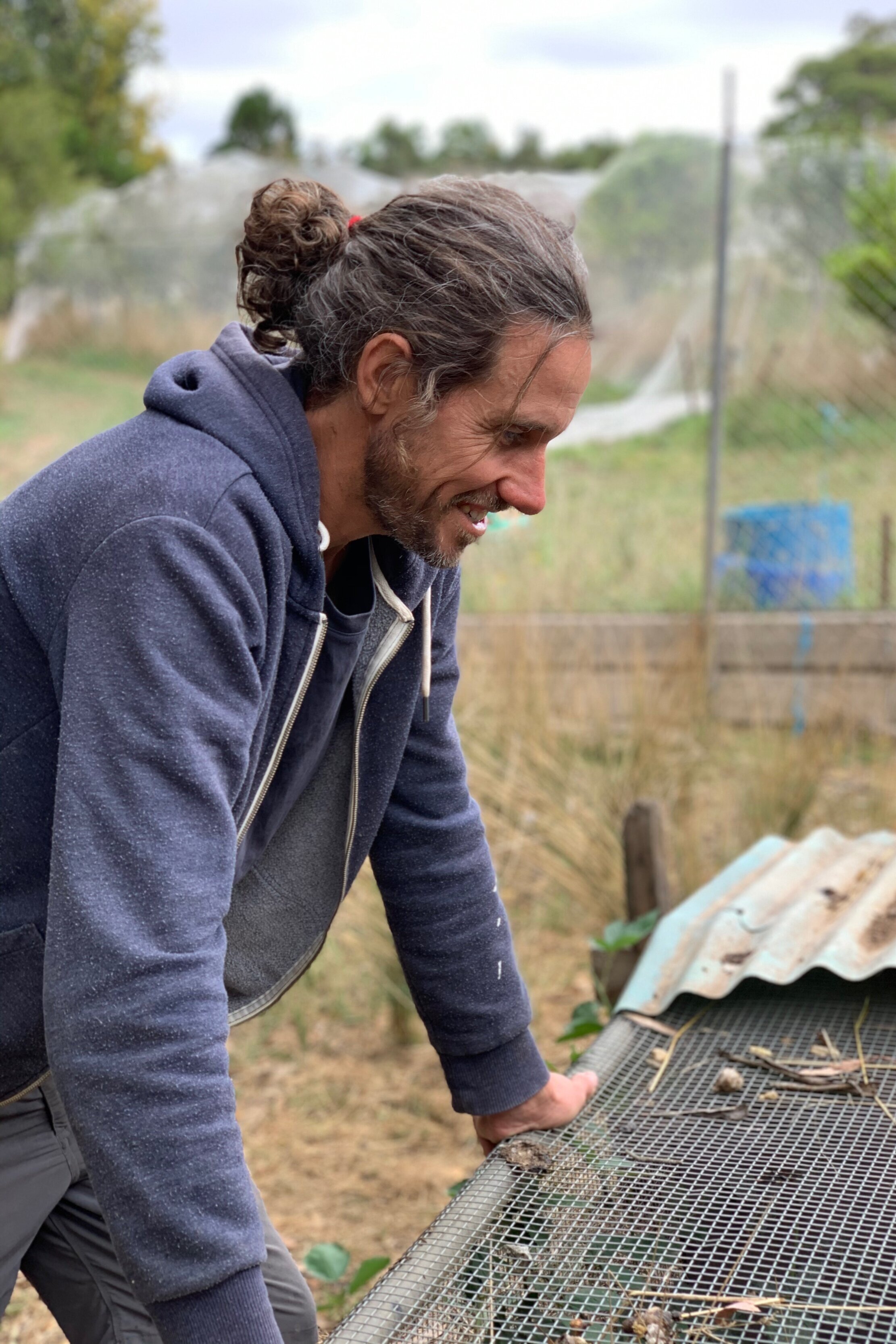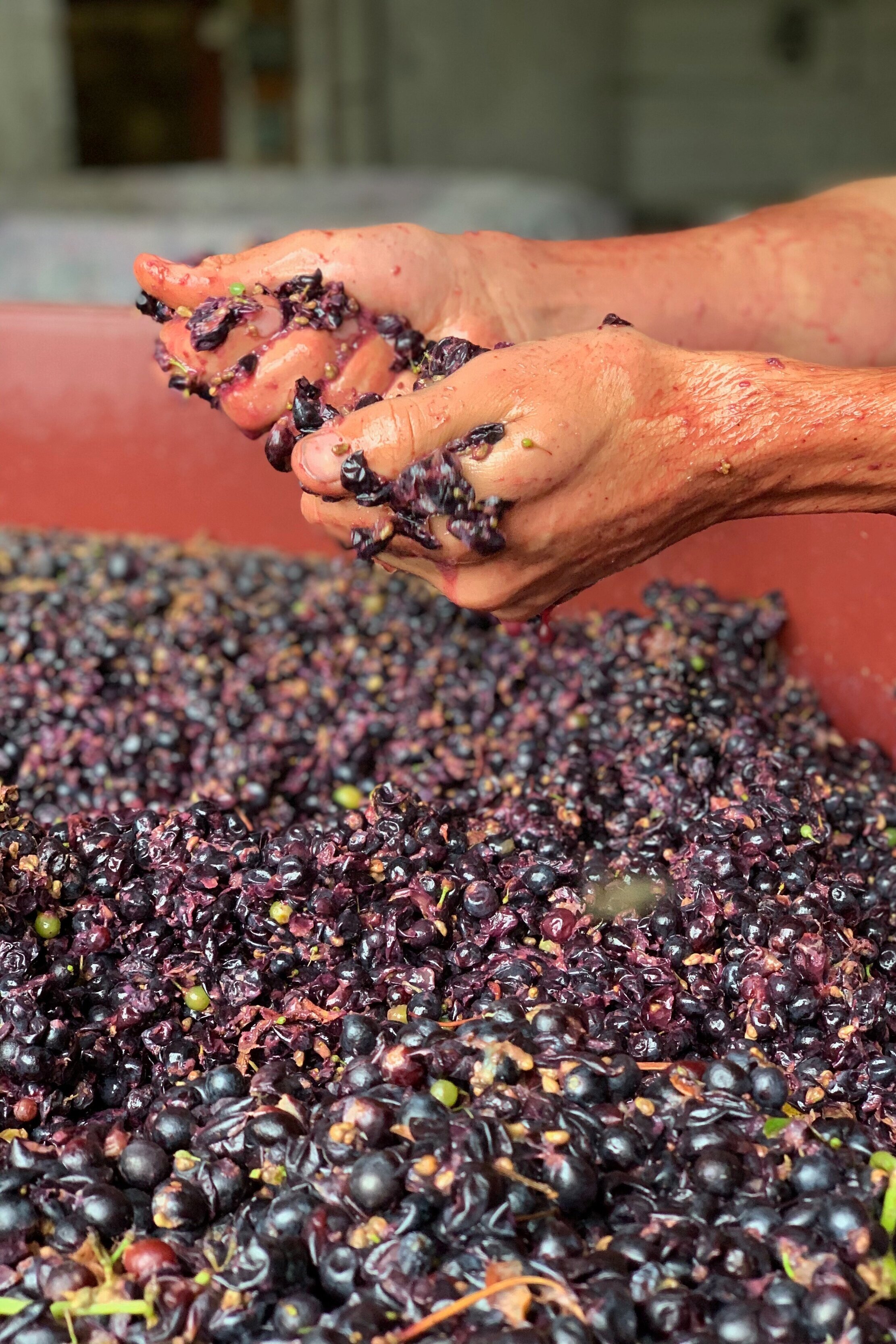Jauma
who – James & Sophie Erskine (owners/winemakers), Fiona Wood (farmer)
where – Farm and winery in Lenswood, Adelaide Hills
vineyards – fruit sourced from organically farmed vineyards in McLaren Vale and Clarendon. Vines dating back to the 1940s.
winemaking – preservative/additive free for all wines.
labor practices – from James: Every year we are assessed by NASAA our certifying agency for organic farming - in the certifying process we must also demonstrate social justice pracitices or no certification is issued.
Regarding contractors we work with, Fiona now manages all the vineyard work and employs the same contract team for all vineyard management which Fiona or the vineyard owners pay for. We have worked with this team now for 6 years. We employ the same team to help with all the picking. Pricing is negotiated for picking by me and the team boss for every block every year with a base rate agreed upon that satisfies their needs. The harder the picking the higher the renumeration per pick. The team owners pay their pickers per bucket of fruit picked. The pickers are always included in the discussion regarding base price every year and the price per tonne paid.
Additionally, we for the farm and winery we have one full time employee. Over grape harvest we have one, locally living casual employee.
We regularly have WorkingOnOrganicFarms (WOOFers) staying with us who assist both at the farm and winery.
farm notes – from James: After 2 years of researching we have set out a biological farming system from which we can evolve. The system can be broken down to above and below ground.
Above ground both cherries and grapes are being sprayed with aerated compost tea whis is delivered to us by our friend and consultant Natalya who studies under Dr Elaine Ingham from Permaculture USA / Soil Food Web institute. We get our compost for the compost tea sprays from Nat because she is a whizz at building Fungi rich (rather than bacteria rich) composts. When we spray out our compost tea it has usually been brewing for between 18-24 hours and is watched to make sure the brew is building life and especially fungi. This is then sprayed immediately out over the farm and the leaves of the vines and cherries. The idea here is that we are increasing the biome on the leaf area. Traditional organic systems work with sulfur and copper to kill off any fungi/mildews that may attack the leaves. The sulfur and or copper is sprayed roughly every 10 days to cover and protect any new growth. The compost tea hopes to cover the leaf with living organisms so that we can keep building the leaf/plant and soil biome so that when mildew conditions arise (powdery and downy mildew) there are already other fungi and life occupying the spaces where mildew could other wise attack = just think of it like your gut and gut health.
Below ground we are introducing up to 26 different cover/co crops that exist within the orchards/vineyards. Here there is some recent science which shows once you reach a certain tipping point over e.g. 8 different plants working in the same area you get gene activation of proteins which increase both water use efficiency and disease resistance. So, the usually organic paradigm is to remove as much of the competing/weed growth around the vines/cherries - we are going to try working with a more symbiotic system - wish the plants luck xx
summer 2021 release notes –
2020 Raindrops Grenache
In 2020 we destemmed all of the fruit for this wine to allow the fruit to speak for itself so we could remind our selves of the distinct flavour, texture and energetic profiles of each of the blocks we work with. 60% Lilies block (80+ y.o. vines on deep white sand over clay in Mclaren Flat), 30% Tullah (80+ y.o. vines on deep white sand in Mclaren Flat) 10% Ralphs grenache (28 y.o. vines on shallow grey sand and ironstone) and pressings from all grenache ferments. Each ferment was fermented in 750L picking bins, destemmed and fermented until all sugar was converted to alcohol.
2020 Why try so hard
Chenin blanc 70% (destemmed and pressed to barrel for 10months), Muscat Petit grain 20% (destemmed and fermented on skins for 2 weeks then pressed to barrel for 10months), 10% carbonic grenache (Lilies vineyard) – fermented in a closed stainless steel tank for 2 weeks then press to another stainless steel tank for 10months elevage. No CO2 is added at the initiation of ferment, rather 50L of fermenting chenin was added to the vessel to “add” C02 to the closed matrix in order to displace any oxygen and thereby limit any potential bacterial growth (bacteria that are responsible for Volatile Acidity and Ethyl Acetate = nail polish remover smell both thrive in oxygen rich environments while yeast thrive in oxygen deprived environments). Most wineries will use purchased C02 for this process in the form of “dry-ice” or C02 gas which is fine, we however, are just intrigued with how you can create wine without any “purchased” additions 😊
2020 Blewitt Springs Chenin
This vineyard is owned and operated by the mighty Lulu and overseen by Fiona Wood. The vines are now 13 years old and in their 3rd year of organic management. This year we decided ferment this wine on skins for 10months in barrel. The heads are removed from the barrels, a bucket of chenin grapes destemmed are added, the head is put back on the barrel and then the barrel is filled with juice and allow to ferment to dry. This fermentation took 10months – interestingly the same grapes were used to produce the Fuji-san pet nat chenin which fermented to dry in bottle in 3 months.
2020 Birdsey Cabernet Franc, Seaview
This magnificent block is now 30 years old and is planted on red sand overlooking the ocean. The wine is fermented on skins for 3 weeks then pressed to old, French oak and rested for 10months prior to bottling. This vineyard often has a high amount of unfertilized fruit that stays green and hard due to poor set during flowering (hen and chicken). In 2020 there was none of this creating a richer more fruit driven wine.
Single Vineyard Grenache:
After more than a decade producing grenache from most of these sites I’m still on an intuitive journey to best express these amazing pieces of soil and the grapes they nurture. Since 2017 I have been trying to pick all the single vineyard grapes at a similar sugar ripeness and therefore potential alcohol. I’ve been tailing earlier picking, later picking, shorter macerations and longer macerations. All wines contain only free run wine that is none of the pressings from the skins are included in the single vineyard wines.
In 2020 all wines are around 13%alc, destemmed and fermented to dry on skins before being pressed to stainless tank, rested for 10months then bottled direct from elevagetank. The idea here is that we can then see the wines without any influence of stems or barrel. I’m not saying this is the best way to express these sites it is just the simplest and allows me to look at the wines in such a pure form for a few years and evaluate how they are ageing etc….There’sdefinitely no right or wrong here just curiosity 😊
2020 Ralphs dry grown Grenache, Clarendon
Same site as Alfreds but these grapes come from the top of the block where there is more natural water available to the unirrigated vines. 28 y.o. vines. Ralph is the owner of the block and Fiona Wood’s father. More water = bigger vines therefore more bunches and in this block, lower alcohol and slower ripening. The wines always have an aniseed like flavour on top of the black berry/raspberry. Both Ralphs and Alfred have a distinct mineral backbone that comes from the ironstone dominated soil profile.
2020 Alfred dry grown Grenache, Clarendon
Alfreds is the same vineyard as Ralphs but the vines are the bottom half of the block. They receive less natural water and are smaller than the Ralphs vines. 28 y.o. vines. The wines are richer, the berries are smaller and ripen faster. The wines are highly aromatic and fruit driven with an aweome mineral undertone from the Ironstone rich soil.
2020 Tullah Grenache, Mclaren Flat
This is Fiona Wood’s own block. 80+ y.o. vines in deep white sand. These wines are always light in colour and take on a complex aromatic profile or rose, raspberry and wild bush. These vines produce bold but ethereal wines.
2020 Lilies Grenache, Mclaren Flat
Lilies vines are owned by Karen and Peter Cahil and managed by Fiona Wood. They are fantastic, gnarly old vines in white, beach sand over clay. The wines are darker in colour and more fuller bodied with very expressive aromatics.
2020 Fujisan Chenin pet nat, Blewitt Springs
Lulu’s chenin blanc vineyard now 13 years old is on quite a steep, east facing block. The pet nat is produced from the vines at the bottom of the slope where there is more natural water and the grapes are fatter and jucier. The grapes are pressed and fermented in tank and bottled at 6g/L residual sugar which is then allowed to ferment in bottle to dry and enjoy!
2020 Danby Carbonic Grenache, McLaren Vale.
Carbonic grenache (Lilies vineyard) – fermented in a closed stainless steel tank for 2 weeks then press to another stainless steel tank for 10months elevage. No CO2 is added at the initiation of ferment, rather 50L of fermenting chenin was added to the vessel to “add” C02 to the closed matrix in order to displace any oxygen and thereby limit any potential bacterial growth (bacteria that are responsible for Volatile Acidity and Ethyl Acetate = nail polish remover smell both thrive in oxygen rich environments while yeast thrive in oxygen deprived environments). Most wineries will use purchased C02 for this process in the form of “dry-ice” or C02 gas which is fine, we however, are just intrigued with how you can create wine without any “purchased” additions 😊
2020 Audrey Carbonic shiraz, Mclaren Vale
Carbonic shiraz (Ralph’s vineyard) – fermented in a closed stainless steel tank for 2 weeks then press to another stainless steel tank for 10months elevage. No CO2 is added at the initiation of ferment, rather 50L of fermenting chenin was added to the vessel to “add” C02 to the closed matrix in order to displace any oxygen and thereby limit any potential bacterial growth (bacteria that are responsible for Volatile Acidity and Ethyl Acetate = nail polish remover smell both thrive in oxygen rich environments while yeast thrive in oxygen deprived environments). Most wineries will use purchased C02 for this process in the form of “dry-ice” or C02 gas which is fine, we however, are just intrigued with how you can create wine without any “purchased” additions 😊
Thank you for supporting our dreams and we hope these wines bring you as much joy, satisfaction and energy as they give us in creating them.
more info –
web: jauma.com
instagram: jaumawines




